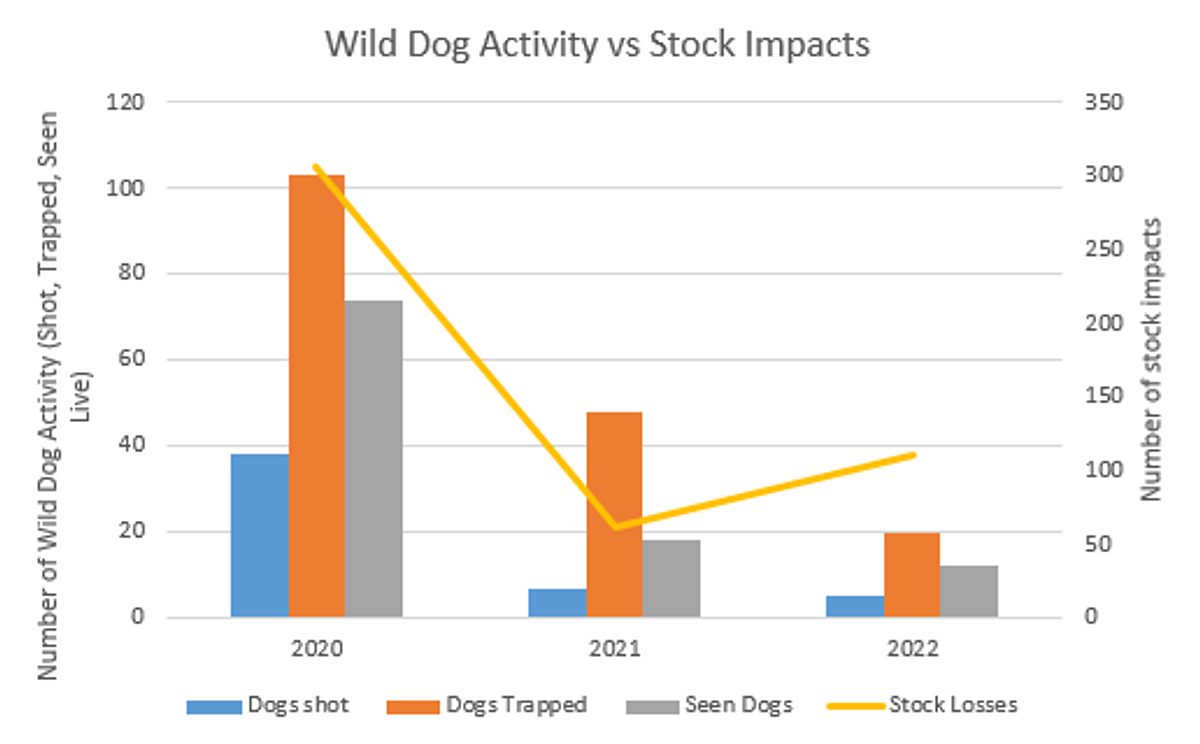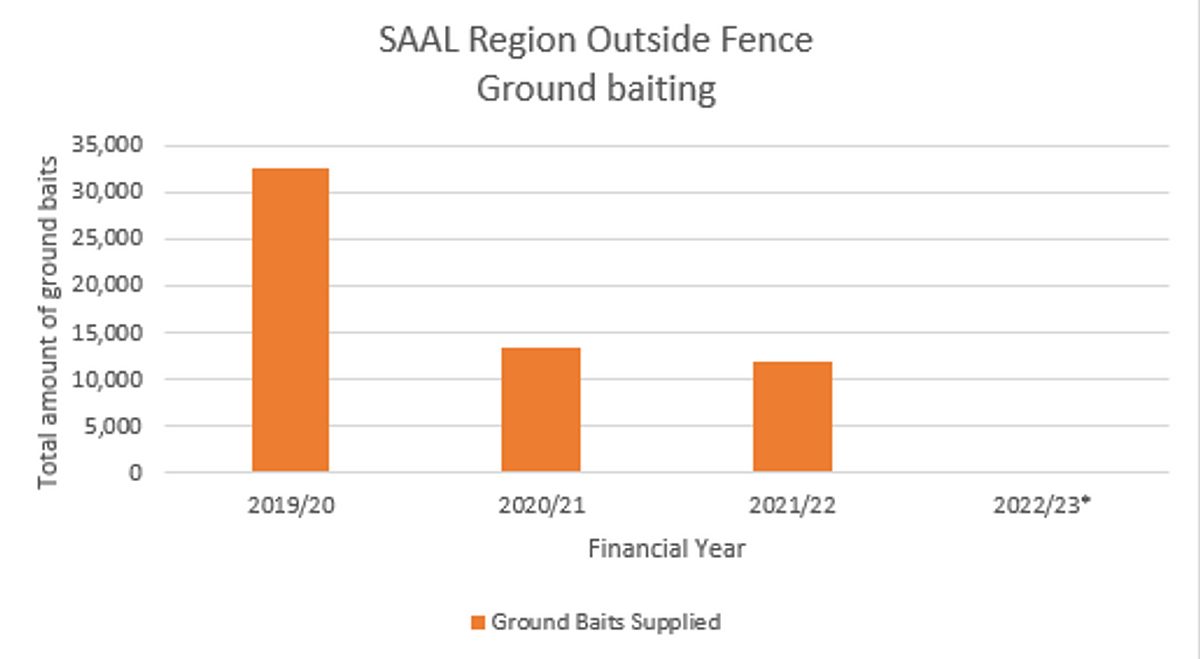Biteback News
The Biteback news details ground and aerial baiting efforts and baiting services to control wild dogs in the SA Arid Lands.
Biteback Webinar
The final Biteback Webinar for 2022 was held on 22 November and is now available to watch online.
Presentations were by Paul Meek, who has 30 years’ experience in wild dog management and is currently the Project Leader for the Centre for Invasive Species Solutions (CISS) and works in the Vertebrate Pest Research Unit for the NSW Department of Primary Industries.
Dr Meek shared information about the Western Tracks Project, where a number of wild dogs were tracked through the landscape in Western NSW. He also shared the results of a wild dog research project conducted at Moomba and included some DNA research and trials of emerging trapping technology.
Both presentations offered some valuable information about how wild dogs traverse a baited landscape in an arid zone that is very similar to our region (inside the fence), the intricate genetic connections between dingo populations across vast distances (north of the dog fence) and reviewed trapping innovation currently being trialled in Australia.
A recording of the webinar is available on our website at https://www.landscape.sa.gov.a....
If you missed any past Biteback Webinars, you can watch the recordings here
Autumn 2023 Injection Service proposed dates
Proposed dates have been scheduled for the autumn 2023 injection services. Invitations and reminders will land in your email inbox 4-6 weeks before the service dates. If you do not receive your invitation before the start of March 2023, please contact our office.
- North Flinders/Marree: 20-23 March
- Gawler Ranges: 5-6 April
- Kingoonya/Gawler Ranges: 10-13 April
- North East Pastoral: 17-20 April
Inside Fence Ground Baiting (2022 Calendar Year)
The graph below shows the total number of baits landholders inside the dog fence in the SA Arid Lands region placed in the past six seasons. It also shows the total amount of baits required for landholders to meet the proactive baiting requirements of one bait per 1km of vehicle track in spring and again in autumn.
The data shows that the number of baits distributed inside the dog fence in spring 2022 decreased by 6785 baits from the baiting round in autumn 2022. While that number is 2820 baits more than the previous spring baiting period, there is still a long way to go to meet the proactive baiting level of 71,983 baits inside the fence in spring and autumn annually. Please continue to work towards the proactive amount required for your property. Broad scale wild dog baiting also helps to control fox numbers.
The proactive baiting level is now mandatory for all properties inside the dog fence within the pastoral zone. It’s also important to recognise that it is a precautionary control measure that must be completed even without any sign of wild dog activity on your property. This will help to ensure activity is supressed before impacts to stock and wildlife occur.

Monitoring of wild dog activity and impacts
This graph shows the number of wild dogs shot, trapped and seen live by landholders and professional trappers inside the Dog Fence for the past three calendar years. It also includes the number of stock killed in the same period.
We believe the reduction in 2020, 2021 and 2022 is due to a combination of drought, dog control efforts by landholders (baiting, trapping and shooting) and by government departments (professional trappers and aerial baiting). To access professional trappers on your property, you will first need to meet the proactive baiting level.
Improved rainfall is expected to result in increased wild dog numbers and therefore a better chance of survival to adulthood and breeding. Continued dog control through baiting, shooting, trapping and reporting will enable low wild dogs numbers to be maintained for a longer period.

These results rely on reporting via maps or wild dog scan, so please continue to report.
The autumn 2023 paper maps will be posted in February. Please return any spring 2022 or older maps when you receive the new one. A blank map or a report of no dog activity in the app is still good data for us. Please contact the Biteback officer if you need help reporting no dog activity using the Wild Dog Scan app.
Aerial Baiting
An emergency aerial baiting program was implemented by PIRSA in March 2022 in response to a flood event that damaged sections of the Dog Fence. A total of 32,370 baits were distributed across 24 properties in the proximity of the damage.
The SAAL Landscape Board also completed an Aerial Baiting program in June 2022, distributing 21,968 baits across 40 properties. It focused around lake edges in areas inaccessible to landholders to build a barrier along common areas dogs use to travel.
PIRSA will conduct two further aerial baiting programs in January and March 2023, targeting areas where land managers and professional trappers have reported wild dog activity in the past six months.
A follow up program will be provided by SAAL Board in May 2023. This will target hot spot areas based on wild dogs reported in the early new year and known corridors used by travelling wild dogs.
Outside fence Ground Baiting (2022/23 Financial Year)
This graph shows the number of baits laid by landholders outside the Dog Fence for the past four financial years. These properties are not required to undertake dog control unless they have land within the 35km Buffer Zone immediately north of the dog fence. They are also restricted to one bait per 2km2. Injection services are only offered in spring for landholders that request it due to high wild dog stock impacts. No properties received baits north of the Dog Fence during the 2022 spring baiting period.



